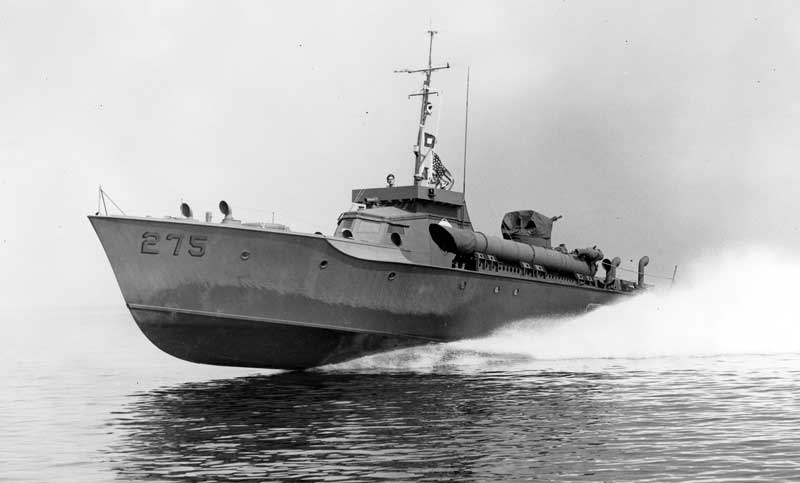We asked PropTalk co-founder David Gendell some questions about his latest book, “The Schooner America: A Lost Icon at the Annapolis Warship Factory,” and his research process. Here are his responses:

When you first started researching the fate of the Schooner America, did you know anything about the Annapolis Warship Factory?
I knew there was Navy boatbuilding at scale at Eastport in World War 2 and sporadically at other points before and after that war, but I did not understand the scope of what went on in WW2 or the amazing entrepreneurial and operational aspects of the shipbuilding.
What surprised you about PT boats when you researched warships built here?
The Patrol Torpedo boats built at Annapolis (and elsewhere) were tactical offensive weapons that were built to operate very surgically, in shallow water, with the element of surprise, and to pack a hard punch and get away quickly. In many ways today’s Naval Special Warfare community is directly descended from the WW2 PT boats. The biggest surprise to me was the speed of the boats... a wooden 70-footer running up to 47 knots!
How did you learn about the boatyard culture at that time in Annapolis?
Some things are timeless: the motivations and relationships between those who fund the boats, those who work on the boats, and the connective tissue between the two groups. This was in place at the Annapolis Yacht Yard in the 1930s and 40s, and in many ways it is still in place today. I firmly believe that the great marine industry we enjoy at Annapolis in the 21st century is directly descended from the work at the Annapolis Yacht Yard during WW2 where hundreds of people were thoroughly trained and gained experience in all aspects of boating business from design to carpentry to electronics to rigging to marketing, sales, and back office. After the war, as Annapolis evolved into a yachting center, those people went out and formed the foundation of the marine industry we all know and love today.
You’ve known a lot of historians in Annapolis—can you name the most important influences on you?
I love and live by the William Faulkner quote: “I discovered that my own little postage stamp of native soil was worth writing about and that I would never live long enough to exhaust it.” Although in this case we might substitute “patch of brackish water” for “native soil.” To that end, I get great energy from reading, learning from, and, if possible, spending time with those who feel similarly.
There are, of course, a few specific people who influence and inspire me along the way. Gary Jobson has an insatiable amount of energy and curiosity, and I would add “sailing historian” to the long list of descriptors associated with him. Over the years I was lucky enough to develop close friendships with history-minded sailors such as the late David Dunigan, Fred Hecklinger, and Laurence Hartge, all of whom were deeply influential in the America project.
In terms of getting deep into Annapolis and the specific history here I have been lucky enough to call Carol Patterson and Jane McWilliams friends and influences (together they wrote the history of Annapolis’s Bay Ridge neighborhood, and McWilliams is the author of the seminal “Annapolis, City on the Severn”).
What’s next for you?
I am under contract to deliver another book to the same publisher. “Battles at Annapolis: Army, Navy, and Two Remarkable Football Games” is scheduled to be published in August 2025. It covers the 1893 and 1942 Army-Navy football games, the last two played at Annapolis. These two games were played under unique circumstances by young men who, not long after the games, were involved in extraordinary combat service on behalf of the United States. Find updates at davidgendellbooks.com.